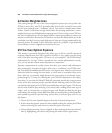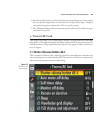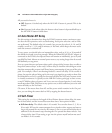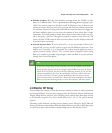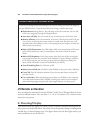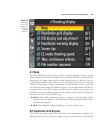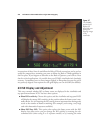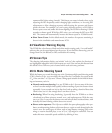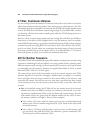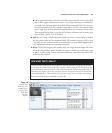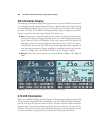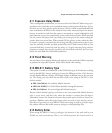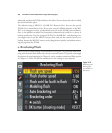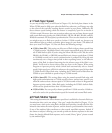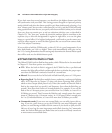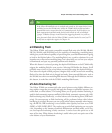d7 Max. Continuous Release
Use this setting to limit the number of consecutive shots that can be taken in one burst
when using continuous shooting modes. Your choices are any value between 1 and 100.
Choosing a particular setting does not mean that the D7000 will actually take that many
shots if you hold down the shutter button long enough. As your buffer fills, continu-
ous shooting will slow down and eventually pause while the D7000 dumps pictures to
the memory card.
However, there are many image quality and size settings that will allow the D7000 to
shoot more or less forever when equipped with a very fast memory card. For example,
at the JPEG Normal setting, you can theoretically shoot dozens of full-resolution images
consecutively, and even using JPEG Fine you may be able to fire off more than 40 pic-
tures in one burst. If you’d rather not accumulate that many images of one action and
don’t trust yourself to let up on the shutter release (it would take about 17 seconds to
shoot 100 pictures at 6 fps), you can limit the maximum burst here.
d8 File Number Sequence
The Nikon D7000 will automatically apply a file number to each picture you take, using
consecutive numbering for all your photos over a long period of time, spanning many
different memory cards, starting over from scratch when you insert a new card, or when
you manually reset the numbers. Numbers are applied from 0001 to 9999, at which
time the D7000 “rolls over” to 0001 again.
The camera keeps track of the last number used in its internal memory and, if File
Number Sequence is turned On, will apply a number that’s one higher, or a number
that’s one higher than the largest number in the current folder on the memory card
inserted in the camera. You can also start over each time a new folder has been created
on the memory card, or reset the current counter back to 0001 at any time. Here’s how
it works:
■ On. At this default setting, the D7000 will use the number stored in its internal
memory any time a new folder is created, a new memory card inserted, or an exist-
ing memory card formatted. If the card is not blank and contains images, then the
next number will be one greater than the highest number on the card or in inter-
nal memory (whichever is higher). Here are some examples.
■ You’ve taken 1,235 shots with the camera, and you insert a blank/reformatted
memory card. The next number assigned will be 1,236, based on the value stored
in internal memory.
■ You’ve taken 1,235 shots with the camera, and you insert an old memory card
you previously used with the D7000, but which has a picture numbered 0728.
The next picture will be numbered 1,236.
David Busch’s Nikon D7000 Guide to Digital SLR Photography296



